Tool maintenance 101: caring for your most important piece of equipment
Taking care of your body is important! Nancy Hiller interviews seven professionals about what they do to make sure this important tool lasts.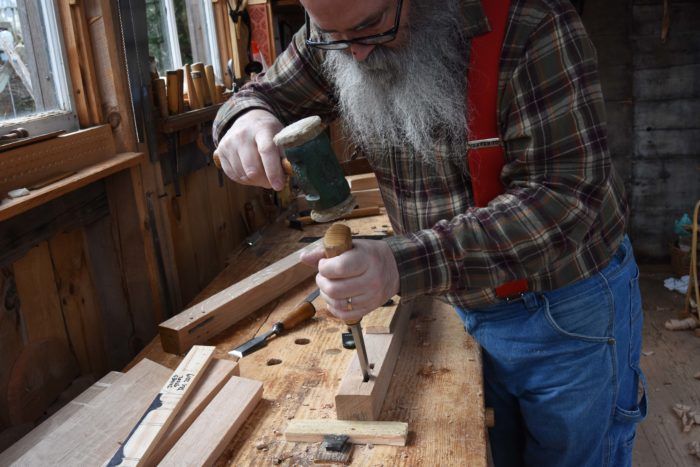
Woodworking is physical, whether you work exclusively with hand tools or use a range of portable and stationary machines. Like most physical work, it can make you stronger. But it also exacts a toll, especially for those of us who build furniture, cabinetry, and houses for a living—we can’t take the afternoon off when we feel a twinge in a wrist, let alone postpone installing a set of kitchen built-ins or framing a roof due to a fractured rib.
When I’m gingerly wrestling a cabinet across the bed of my truck, carrying my sliding compound miter saw up a set of stairs to a client’s entryway, or standing up after perfecting the fit of a bookcase door at floor level, I often become aware of an ache in my knees, back, or shoulder—the last due to ligaments I tore badly while carrying a massive armoire upstairs to a client’s bedroom in my early 30s (one of those gifts that keep on giving). Instead of resenting the physical demands of my work, I recall how English author Vita Sackville-West described the elderly protagonist in her novel All Passion Spent as “beginning to feel quite an affection” for her growing number of “bodily ailments… Her body had, in fact, become her companion, a constant resource and preoccupation; all the small squalors of the body, known only to oneself, insignificant in youth, easily dismissed, in old age became dominant … Yet it was … an agreeable and interesting tyranny.”
For me, along with many of my woodworking friends, the tyranny lies partly in the chronic nature of so many of our aches and pains, which require regular tending. Obviously I’m not talking about serious injuries, which, far from being even remotely agreeable or interesting, can make your days miserable and be utterly incapacitating. To keep going, it’s essential to maintain strength, avoid injury, and learn to minimize the limitations that can result from “bodily ailments.” My husband is a carpenter and general contractor; many of our friends are also in the building trades. At this point in our lives, no gathering seems to be complete without discussion of our go-to or most-recently-discovered preventive tips and welcome fixes.
For this post I asked several professional woodworkers (and one farmer, who’s among the hardest-working people I know) to share their tips in the hope that they’ll be helpful to others. (click on a name to go straight to their section)
- Chris Becksvoort shares his basic daily exercise regimen (and breakfast!), along with a few ways he minimizes bodily stress in the shop.
- Lynette Breton tells us some of the issues she faces 40 years into her furniture making career, and describes how she handles them.
- Peter Follansbee extolls the virtues of variety at work.
- Daniel O’Grady discusses the benefits of tai chi.
- Audim Culver and Ivy Siosi tell us about the affordable piece of equipment that has proved invaluable for lifting massive slabs.
- Linda Chapman has made her living in one of the most physically demanding lines of work, small-scale farming; although the nature of her daily work varies widely from the growing season (which occupies the bulk of the year, from seed propagation through harvesting late-fall blooms) to winter’s brief rest, when her focus is more on the business side of things, her days are long, and she handles every aspect of the work, from tilling new organic material into beds through weeding and watering, followed by harvesting and making up bouquets to sell at farmers’ markets—where she’s right there, in the booth. To stay strong, she relies on a variety of exercise and swears by her hot tub.
- Carpenter Mark Longacre (full disclosure: he’s my husband) introduces another topic, clothing, that has a bearing on his hips and back.
Please share your own suggestions in the comments. I’ll start with mine.
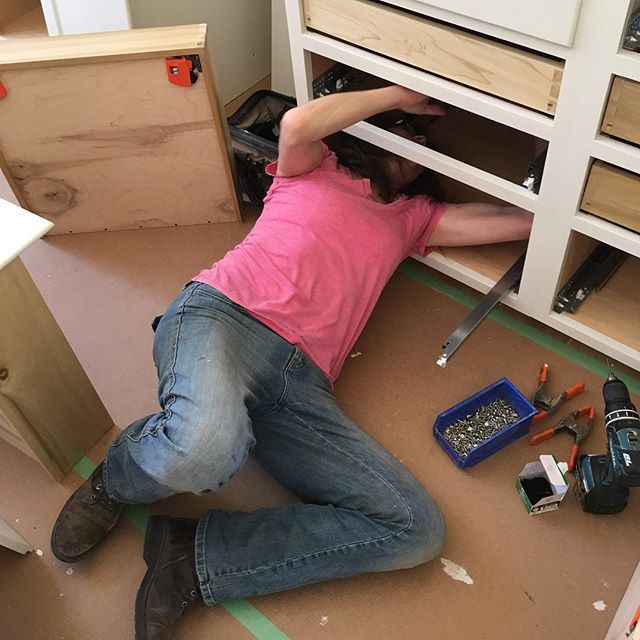
In the shop, my workbench is 38 in. high to minimize bending over; I built our kitchen cabinets at home so the counters would be this same height. For close work such as cutting dovetails by hand, I use a benchtop bench. To maintain general strength I lift weights, and I do several back, arm, and neck stretches every evening, in addition to using a back roller to work on extra-tight places. When clients remark that I do the work of someone half my age I reply “the day I stop doing what I do is the day I’ll stop being able to do it.” As Chris Becksvoort says, use it or lose it.
My kit for treating aches and pains:
- A heating pad relaxes lower and mid-back muscles at the end of the day.
- A hot bath is a potent muscle relaxer at bedtime. A few drops of lavender oil and some Epsom salts are the icing on the cake.
- Cryoderm spray is a blessing for on-the-job relief of sore muscles and sprains.
- At the first twinge in a knee, wrist, or ankle, I grab an over-the-counter sports brace. In many cases, wearing a brace for just one workday sends the twinges packing.
- Adhesive heat pads offer portable, site-specific relief for acute pain in the back and shoulders. The downside: they’re single-use, which means a lot of waste. I try to limit my contributions to the landfill, so I use these rarely.
- A theracane allows you to massage your own back as firmly as you want. It’s excellent for targeting just the right place so you can work out a kink.
- A back roller (as an alternative, one or two tennis balls in a sock will work well) or appropriately sized foam roller is another way to massage your own back, breaking up scar tissues and increasing blood flow to sore spots.
- Massage and Active-Release Therapy treatment as needed. For many years I saw my regular chiropractor for occasional adjustment. It was a great way to feel better fast—until a recent adjustment caused a new and very painful injury. No more quick fixes for me.
Chris Becksvoort, furniture maker
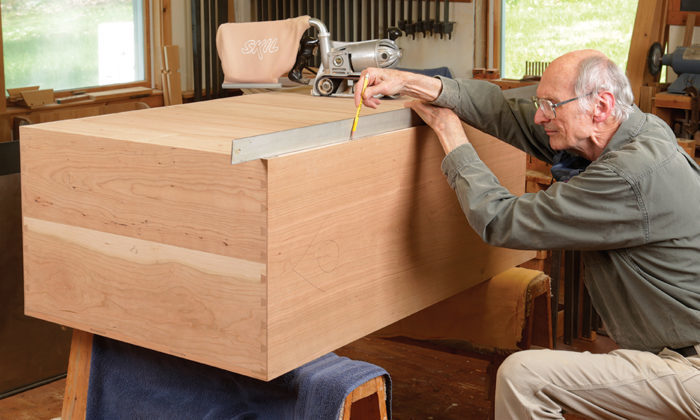
Sooner or later, old age begins to rear its ugly head. You’ll have to learn to accommodate those aches and pains, and find ways to deal with them. I’ve had back issues since I was a teenager and have managed to keep myself upright for the past 70 years. Early on my chiropractor told me that the best thing to do was keep my abdominal muscles strong. Also stretching and exercise.
My morning routine consists of 50 leg lifts, 20 crunches, side to side stretches, toe touching stretches (yes you’re allowed to bend your knees, since ligaments are not as flexible as they used to be), then 20 push-ups, and 25 curls with a 15 lb. barbell, followed by a 5 lb. weight for pendulum exercise for my shoulders. A healthy breakfast of oatmeal and fruit, followed by a half-hour walk. Keep moving. As they say, “use it or lose it.”
At work, variety is the spice of life. Even though I’ve made several-hundred-thousand dovetails, my tasks are varied enough so that I’ve managed to avoid carpal tunnel issues. When writing or drawing, I have a standing desk with a footrest. The footrest is ideal for stretching back muscles and ligaments. Bending over for long periods of time is really hard on the back. My workbench is 39 in. high, ideal for my size so that most of my work does not require too much bending. For additional leverage when planing, I have a 2-in.-high platform I can pull out. When carving, I have a 12-in. bench that fits on top of the workbench.
When I do have to bend over or lift, I wear a back brace: for unloading lumber, shoveling snow, or vacuuming. Every two months I visit the chiropractor to get myself re-aligned. On alternate months I visit a Neuromusculoskeletal D.O. for some heavy-duty manipulation.
With old age comes experience. I do slow down—no more 60-hour weeks. Most important, I stop to think my way through the next step, rather than jumping in and facing the consequences.
Lynette Breton, furniture maker and woodworking teacher
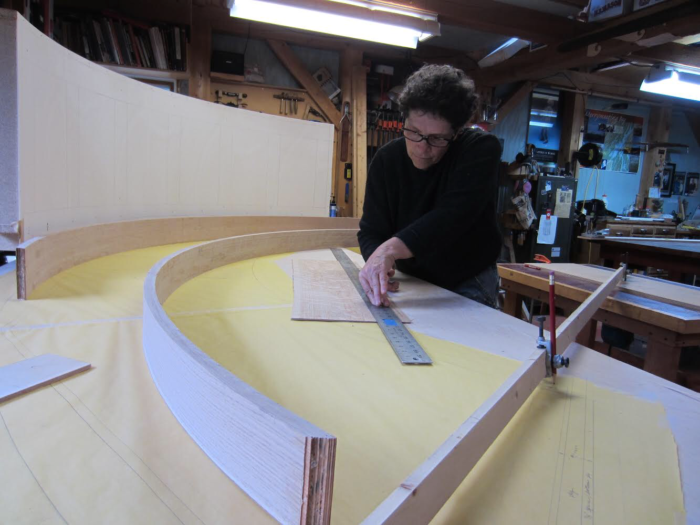
Issues I have had to work with after 40-plus years on the bench include:
- rounding over of back and neck from years of bending forward over the bench
- loss of muscle strength, along with shoulder problems caused by driving screws, reaching high and lifting up. Injury to hands and arms caused by excessive hand clamping and repetitive motions.
- chronic back problems
- connective tissue tears.
Over the years I have worked with many healthcare professionals who target specific areas of need. Yoga is not an option for me because it has caused back injury. This is also true of chiropractic treatment–one misinformed move has set off back problems. So I rely on the softer approaches of the following health routines, in addition to being thoughtful about how I work:
- Walking 2 miles, every other day
- Once or twice a day, I lie on a large exercise ball to counter the curve in my spine from leaning over the workbench.
- An infra-red sauna 2 to 3 times a week is miraculous for pain relief. I have one at my home, given to me by a longtime client at the end of a project.
- Acupuncture for pain management
- Not letting an injury go too long before getting into a physical therapy program with a professional. Core-strengthening and targeted exercises have kept me from needing surgery.
- Lastly, I work with a cranial sacral/neuromuscular re-education person who also is a posture movement coach. She draws on her varied training in our sessions together and gives me homework, all the while taking into account that aggressive movement does not work for me.
I have learned what my body can do, and I have learned different methods of approaching my work. I pay attention when something starts to hurt, which can be hard to do when you’re in the work zone. I pace myself when it comes to repetitive motions such as planing and sanding; when possible, I use my less-dominant hand. When contemplating tasks, I don’t just consider efficiency, but also how the work may result in pain or injury from overuse. With so many tasks involved in a project, I look at the big picture; instead of sanding for eight hours straight, I break things up in increments. I also change up my activity by moving to other work I have to do. Everything gets done in the end, and I am better for the variety of physical activity.
Peter Follansbee, furniture maker
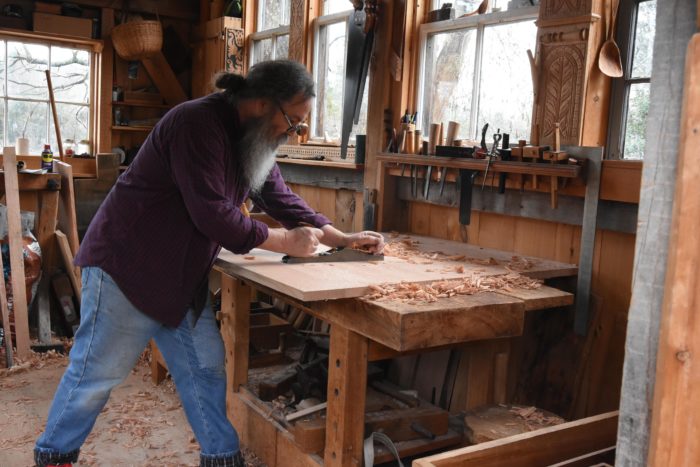
My background includes 20 years of woodworking at a living history museum. One thing that means is I was constantly interrupted. So I was never hunched over a bench for hours at a time in one position; every few minutes new visitors would arrive and be greeted, at the very least. I’d be working at the bench, and someone would ask “How does that pole lathe work?” (or they’d point to it if they didn’t know its name). Nine times out of ten, I’d stop and show them.
The very physical nature of hand-tool woodworking with wood riven from logs also meant I had to learn to pace my work through the day. Over time I came up with a simple routine that I still employ mostly. Mornings are for heavier, more physical work. Afternoons for smaller movements, more detail, finer work. These patterns are counter-productive in terms of output, but I’ve never been motivated by how much work I can get out the door. My interests are in how I work, and I take my cues from historical furniture, trying to learn how 17th-century furniture was made.
I also work a few pieces of furniture at the same time. This is mostly in consideration of moisture content. My stock is not ready the day I hew and plane it from the log; it needs to sit a while before I can proceed. So I bump around from this to that. The museum work also got me 20 years of daily practice, with almost zero pressure. That made me fast. I love to carve oak furniture, but I rarely carve more than two hours at a time. I love hewing riven oak with a hatchet, but I always go back and forth—hewing, planing, next piece—hewing, planing. I don’t hew 10 pieces to plane this morning, then go to the bench to plane them all. Terribly inefficient, but it keeps my work varied, so I’m never in one position for long. Variety, I guess, is the key for me.
Daniel O’Grady, furniture maker
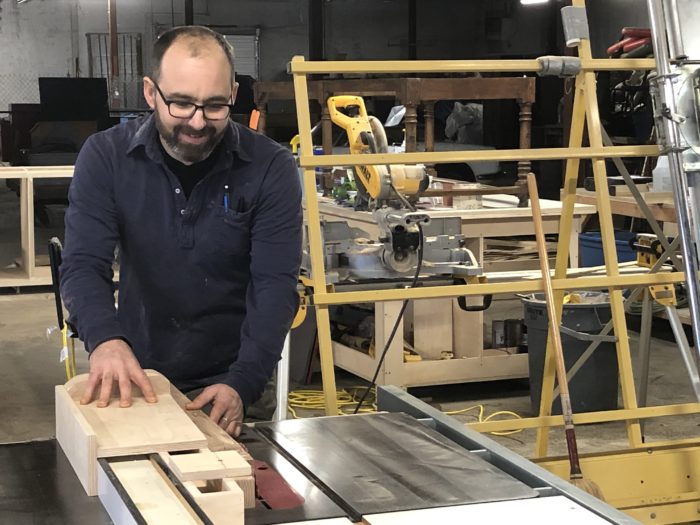
I have been practicing taijiquan as long as I have been working with wood, which is going on two decades. I find that these two practices complement each other well.
Taijiquan, often written in the West as “tai chi,” is a traditional Chinese martial art. I began my practice by learning a solo sequence—a series of 108 movements that allow the individual to explore the structure of the body and the principles of the martial art.
Every morning, before I begin the sequence, I will do standing work: locating tension in the muscles and relaxing them, correcting my posture, centering my weight and developing my “root.” “Rooting” and “sinking” are two commonly used visual metaphors that help the practitioner become loose and relaxed in the upper body, while grounding the lower body. In the shop, I also spend a lot of time standing in one place. I do my best to stand at my bench in the shop with the same feeling and attention that I stand in taijiquan.
In the solo sequence, I attempt to maintain these principles within movement. In taijiquan, power is not emitted through upper body strength. Rather, it is generated from the lower body and the waist and then transmitted through the arms or legs, which remain soft and relaxed until impact. In woodworking, I am constantly moving heavy objects. When I am lifting something, I try to stay grounded, use my lower body, and move from my center. I find that when I do this, I have less lower back and shoulder pain—two areas where I tend to hold tension. I have learned that there are a number of woodworking applications that are enhanced by a soft and loose upper body. For example, upper body softness enhances my ability to sharpen a chisel, use a handsaw, and cut to a line at the bandsaw.
Audim Culver and Ivy Siosi, furniture makers
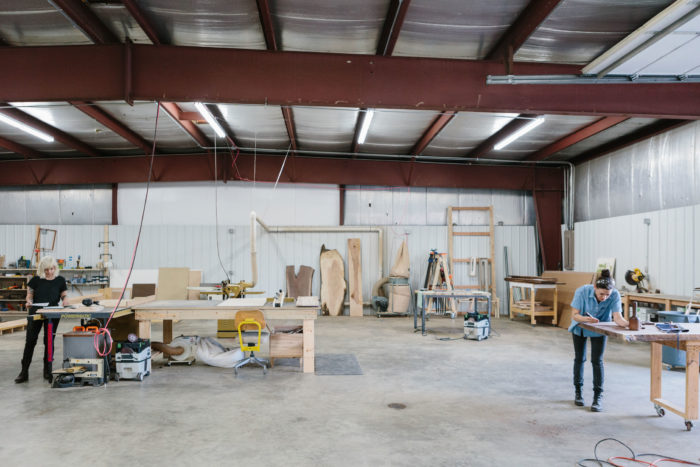
We’d like to think that we’re small but mighty, but there’s only so much a body can handle when moving large slabs around the shop on a regular basis. It is important to work smart, lift with your legs, and most importantly use leverage and wheels whenever possible. We use available 2x4s, steel tubing, whatever’s around to lift up a corner of a slab, and then slide a dolly underneath. Once the 400-lb. slab is on wheels, we roll it below the winch (attached to a steel support beam) to lift it onto a workbench on wheels. It took us about five years of heavy lifting to finally invest in a winch…we waited too long. In the past, we’ve both had minor shoulder and back issues from lifting more than we should, but with improving our system and investing in a $130 winch, we no longer lift more than we should.
Linda Chapman, flower farmer
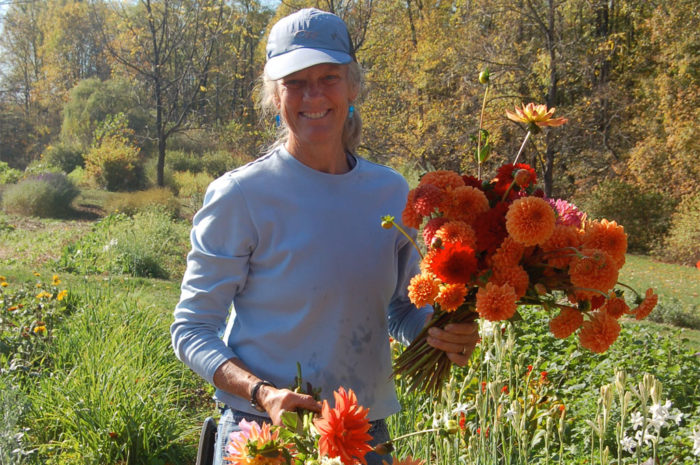
I have worked in my agricultural business for 34 years, and taking care of my body has become more and more crucial as I’ve aged. Of course, eating, hydration, and sleeping well are no-brainer body-care priorities, though they are not always so easy to maintain in the craziness of busy weeks.
To maintain flexibility, as well as soothe sore hands, feet, and back, my go-to, morning and evening, is my hot tub. I see the sun rise, I see the stars… It’s good for body and spirit.
In the winter I re-energize and create strength and flexibility for the spring season ahead by an active yoga practice. I vow each year I’ll maintain it through the summer, but I’ve never made it further than May. I also swim at the local Y – again, more in winter than any other time of year.
Ergonomic tools are essential for avoiding repetitive motion weaknesses. I avoid hand clasping tools for regular stem harvesting–a slashing tool proves much less tiring. We need to “travel” a lot on my farm to and from the barn and cooler. Having an electric golf cart with a platform on the back is efficient and saves my staff and me a lot of wear and tear.
As I age, I see a need to reduce my work hours and devote more year-‘round care to my physical frame for a quality of life I hope to enjoy into my late 70s at least. Farming has been hard on my body; however, it has also enhanced my strength and coordination.
Mark Longacre, carpenter
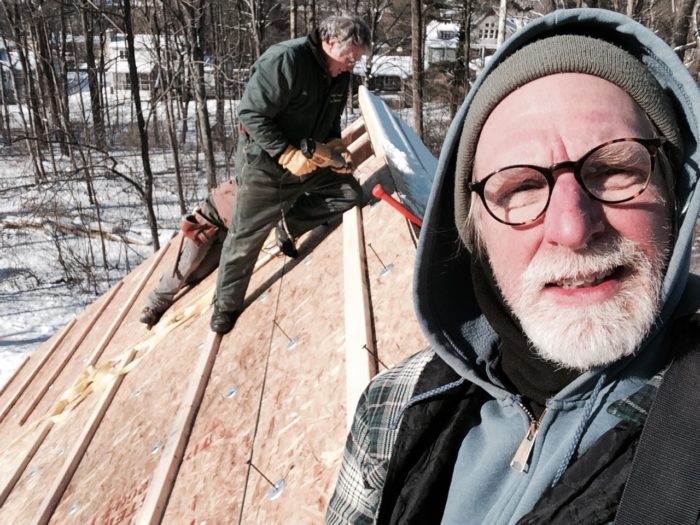
I have worked as a carpenter since the early 1980s. Although I’ve run my own general contracting business for most of that time, for the most part I work alongside my crew—I’m not one of those drive-by contractors who primarily manage others. Around 2006 I made an exception to my hands-on work after I injured my back thanks to a bad move in a softball game. The back spasm was so severe that it sent me to the emergency room. I was off my feet for several days and didn’t know whether I’d be able to work on the job again. Since then I’ve relied on the following routine to regain my strength and keep working:
- A professional massage every two weeks
- Active-Release therapy as needed
- My morning stretching and strengthening exercises include yoga and ELDOA.
- A hot bath first thing in the morning warms me up and relaxes my muscles for the workday.
- Several years ago I stopped wearing a leather toolbelt around my waist, because the weight was hurting my hips and back. I now wear a Blaklader tool vest.
- Instead of wearing a belt to keep my trousers up, I wear overalls, for the same reason as I no longer use a leather toolbelt.
*For referring to body care as “tool maintenance” I’m indebted to Mark Longacre.

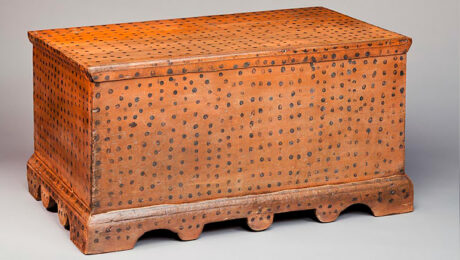


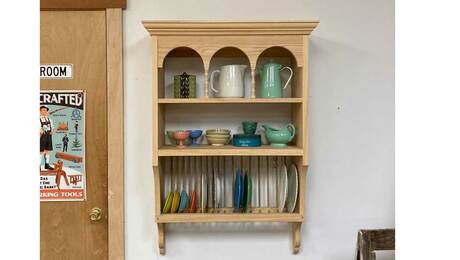


















Comments
Huge + on the weight training advice. I've incorporated weight training in my routine for years now and I can't say enough good things about it. Although we lift objects in our shops during the course of a day, weight training is a progressive form of exercise where we force our bodies to adapt to ever-increasing weight. No need to go crazy with this, but is definitely the best way to counter the natural loss of muscle mass as we age. Norman
Vitamin B-12 promotes healing and helps convert food to energy. I had virtually no muscle cramps at night after starting taking B-12 supplements. My Oncology/Hematology Physician told me that you can't take too much vitamin B-12, because the body regularly eliminates it and flushes it out. I totally agree to a balanced diet and stretching exercises before, during, and after work.
Hi Nancy,
Thank you for this article. Seeing seven different individuals who do this for a living all having a fair bit of work they do to keep their body functioning is a great data point for the rest of us.
Sincerely,
Joe
This is a great article. I'm a slowly aging ER doctor who woodworks and blacksmiths; having regular exercise and maintaining flexibility as we age are the two most important things we can do to avoid injury.
For me it's all about adaptation. I developed a "trigger finger" from repetitive motion like tightening my clamp handles and pushing my hand planes. Fortunately for me my niece is a hand therapist. On her recommendation I've changed the way I grip my tools and have added a self-adhering fabric wrap to my tools that require a turning motion. Of course she also gave me some hand/finger exercises to do and I'm back to almost normal. But I stay very aware of how I interface with my tools.
BiWeekly professional massage. Inversion table stretches me out, gravity is relentless. Keep moving as much as possible. CranioSacral Therapy, hurts my mouth to say it and it is a little out there, but it seems to help.
And great article FWW! Without this essential tool....everything would become dust & rust.
Great post! I spent my younger years working in high-end restaurant kitchens where the bodily wear and tear was similar (except there were the additional issues of late night hours, constant risk of burns and the intensity of a dinner rush). So, I'm surprised nobody above mentioned my first line of defense at keeping the aches and pains at bay: pay attention to where the rubber (or leather) meets the road!! FIRST, invest in several pairs of proper boots...they don't need to be "work boots" (could be high quality hiking or military style), but boots beat shoes every day of the year. Good supportive, breathable socks too. Try not to wear the same pair two days in a row. The boots that is...if your wearing the same socks two days in a row then you're beyond help and clearly not caring for yourself:). I believe soldiers are/were taught this in basic and issued 2-3 pairs of combat boots. When they've lost their cushion or support replace them or at least get new insoles. Even better, go to a podiatrist for custom orthotics. Even with good boots and a nice hardwood floor (if you are lucky! But lots of shops are sadly on concrete slabs/garages/basements) I can't imagine not having rubber standing mats throughout my shop. I position rubber mats in front of every power tool and nearly surrounding my bench and sharpening area (its protected more than one tool's edge too).
Excellent reminder of the importance of shoes and floors. Thank you!
Another vote for regular weight training - it strengthens not just the muscles but the connective tissues & their connections to the bones, as well as the nerves involved and even the blood supply mechanisms. Another often overlooked benefit is that it teaches you the safest and most effective way to lift heavy things, whether it's a barbell or a large piece of furniture.
Another exercise benefit can be obtained by avoiding the kinds of exercise that are "ballistic" in favour of those that involve less chance of a sudden and damaging moment of stress-too-far. Swap running for cycling, for example. (Don't fall off, mind). Swimming rather than high diving. :-)
Lataxe
Great perspectives.
What would help is to provide the age (if they are willing to share ;)) of the folks.
Ganesh
I thought I had mentioned at least some of the ages. Maybe not? Peter's in his 50s. Daniel is in his 40s. Audi and Ivy are in their 30s. The rest of us are in our 60s.
At 78, I'm still hanging in. There are days when the tendons/ligaments in my wrists and lower arms require several doses of ibuprofen and naproxen, but I keep on pushing.
Use it or lose it. I intend to use it until the guys with the shovels take over.
After working 2 jobs for many years, fire and ems then woodworking on my off time A Dr friend told me to make time for myself Do something outside your normal routine He suggested I try Bowling to get your mind on something different you will be using a different set of muscles and your head will be focused on something different than you are use to . Took his advice an now spend one day a week ,just close up the shop and go due something different.your body and head will thank you . Ps my grand father once told my in my young years , if it moves it is go to hurt
Log in or create an account to post a comment.
Sign up Log in